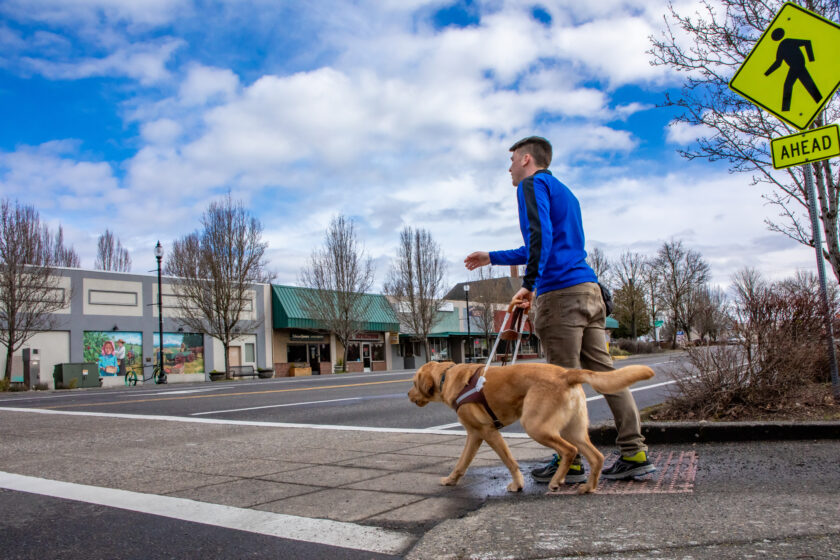Focus on the Phases: Guide Dog Training Part Two
Thursday September 28, 2023

Welcome back to Part Two of our five-part series, Focus on the Phases! Come along with us as we continue to explore the various stages of the guide dog training process. Each week, we’ll give you some insight into the specific skills and milestones that guide dogs in training go through when they are on campus.
If you missed it, you can read Focus on the Phases: Guide Dog Training Part One
Phase 2 expands upon the skills learned in Phase 1. Phase 2 begins in a quiet area with well-defined sidewalks and curbs as the dogs begin to learn the basics of guide work and travel. The dog is introduced to the feeling of pulling into the harness, how to stop with their front feet on the curbs, and how to move around obstacles. The handler will also spend time teaching them to remain focused on their work around varying degrees of distractions, like other dogs, toys, and people.
As dogs move into Phase 3, they will experience some added challenges. The instructor will begin working in a variety of settings to generalize the basic guide work skills developed in Phase 2. Not all sidewalks and curbs look the same, and by visiting different environments, the dog will learn how to generalize their new skills in different settings. One of the unique environments they will experience is walking in an area that does not have any sidewalks. This is common in quieter residential neighborhoods. They’ll be taught to hug the left edge of the roadway for safe travel.
Phase 3 is also the time for preliminary testing to assess that the dog can execute the basic guide dog skills without assistance from their handler. These tests include a walking route on the street and a formal obedience test. Preliminary testing serves as a checkpoint that helps trainers identify when the dogs are ready for more advanced training. The foundation for these later skills requires proficiency in the skills demonstrated during preliminary guide work and obedience testing.
Traveling with a guide dog is a team effort. Sometimes a handler will ask their guide dog to continue ahead at a time that is not ideal. Perhaps other pedestrians are creating a barrier to safe travel, or maybe there is an undetected electric vehicle waiting in a driveway, blocking the sidewalk. This is when teamwork comes into play! In Phase 3 dogs will begin to learn a unique guide dog behavior called intelligent disobedience: or disobeying what the handler asks them to do and refusing the command or moving in a different, safer direction.
Come back next week to read about Phases 4 & 5 of guide dog training in Part Three of our series, Focus on the Phases!

